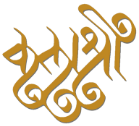
Immerse yourself in the captivating journey of Kathak, a classical dance form that originated in North India. With its roots in ancient courts and temples, Kathak seamlessly weaves together storytelling, music, and dance. From its evolution through Mughal courts to its diverse styles, this art form embodies India’s rich heritage. Delve into its graceful spins, intricate footwork, and expressive gestures, while discovering the numerous physical, cognitive, and emotional benefits it offers.
History and Origins:
Kathak, a captivating classical dance form of India, has a rich history rooted in culture and tradition. Its origins can be traced back to the ancient courts and temples of North India, where it evolved as a storytelling art that merged music, dance, and theatrical elements. The term “Kathak” is derived from the Sanskrit word “katha,” meaning story, reflecting its narrative nature. Over centuries, Kathak has absorbed influences from various cultures, resulting in its diverse styles.
The history of Kathak is closely intertwined with the Mughal courts, where it found a prominent place during the medieval period. It was during this time that Kathak incorporated Persian and Central Asian influences, infusing it with new rhythms, costumes, and nuances. The dance form transitioned from being primarily a temple art to a courtly performance, adapting to the refined tastes of the Mughal elite. As centuries passed, Kathak further evolved, adapting to changing social contexts while preserving its core techniques and storytelling essence. Today, Kathak stands as a cherished embodiment of India’s artistic heritage, continuing to captivate audiences with its intricate footwork, expressive movements, and enthralling narratives.
Kathak Dance Basic Movements and Techniques for Beginners:
Kathak is a classical dance form originating from North India that combines intricate footwork, graceful movements, and expressive storytelling. Here are some basic movements and techniques of Kathak:
Tatkar (Footwork)
Tatkar involves rhythmic footwork patterns that are an essential aspect of Kathak. There are different variations of footwork sequences that can be performed at various speeds and rhythms. The sound of the feet striking the floor forms a key element of Kathak’s percussion aspect.
Chakkar (Spins)
Kathak is known for its graceful and controlled spins (Chakkars). Dancers execute fast and controlled spins in different directions, often accompanied by dynamic arm movements and expressions.
Tora and Tukra
These are small compositions consisting of footwork and hand movements. Tukras are short sequences of movements that are repeated in different rhythmic patterns. Tora refers to intricate footwork sequences.
Abhinaya (Expression)
Abhinaya is the art of expressing emotions and storytelling through facial expressions and body language. It is an integral part of Kathak dance and adds depth and meaning to the dance.
Mudras (Hand Gestures)
Kathak uses a variety of hand gestures, known as mudras, to convey specific meanings and emotions. These mudras are used in conjunction with facial expressions to enhance the storytelling aspect.
Posture and Body Language:
Upright Posture
Maintaining an upright and poised posture is crucial in Kathak. Dancers stand tall with the spine straight and shoulders relaxed, exuding confidence and grace.
Angika Abhinaya (Body Movements)
Kathak involves fluid body movements, including bends, stretches, and torso rotations. These movements are precise and controlled, contributing to the dance’s elegance and expressiveness.
Hand Placement
Hand gestures (hastas) are a vital part of Kathak’s storytelling. Fingers are extended gracefully, and gestures are performed with precision, conveying emotions and characters effectively.
Facial Expressions
Expressive facial gestures complement the hand and body movements. Dancers use their eyes, eyebrows, and mouth to convey a wide range of emotions, enhancing the narrative aspect of the dance.
Stance and Alignment
Proper alignment of the feet, knees, and hips is essential. Dancers often adopt specific stances, such as the aramandi (half-sitting) position, to facilitate intricate footwork and fluid movements while maintaining balance.
Benefits of Learning Kathak:
Learning Kathak offers a wide range of benefits, beyond just the mastery of a beautiful dance form. Here are some of the key advantages of learning Kathak:
Physical Fitness
Kathak involves rigorous footwork, spins, and movements that provide a comprehensive cardiovascular workout. The intricate footwork improves lower body strength and flexibility, while spins enhance balance and coordination.
Cognitive Development
Kathak requires dancers to memorize complex sequences of movements, rhythms, and expressions. This helps improve memory, cognitive function, and mental agility.
Confidence and Self-Esteem
Mastering Kathak requires dedication and practice, leading to a sense of accomplishment. Performing on stage builds confidence, helps overcome stage fright, and fosters a positive self-image.
Stress Relief
Engaging in dance can be a form of stress relief and creative outlet. The focus required during practice and performance can help individuals temporarily escape from their everyday concerns.
Posture and Body Control
Kathak requires dancers to maintain proper posture and control over their body movements. This awareness can extend to daily life, improving overall posture and body mechanics.
In conclusion, Kathak, a captivating classical dance form, elegantly weaves together storytelling, music, and dance, tracing its origins from ancient North Indian courts and temples. Its evolution through Mughal courts enriched it with diverse styles, encompassing graceful spins, intricate footwork, and expressive gestures. Beyond its artistic allure, learning Kathak with institutions like Kalashri – Kathak Classical Dance Academy offers physical fitness, cognitive development, confidence, and stress relief. Embark on this enchanting journey to explore India’s rich heritage through the rhythmic tapestry of Kathak.
Have Questions
Unleash the Grace of Kathak Dance! Enroll Now for Inspiring Kathak Dance Classes and Embark on a Journey of Rhythmic Elegance.
